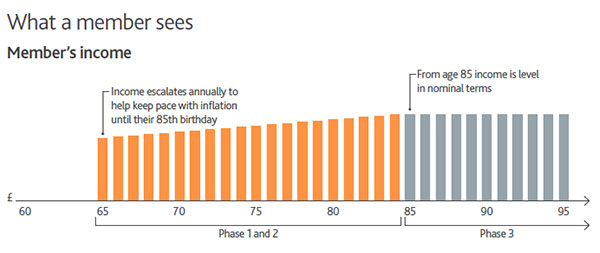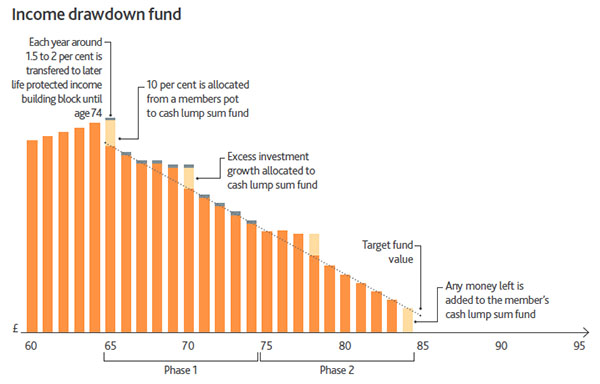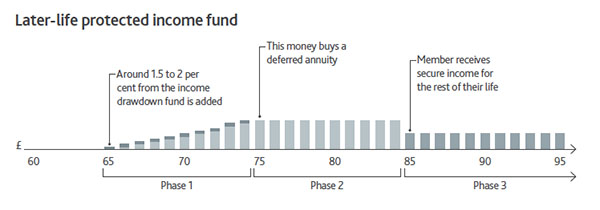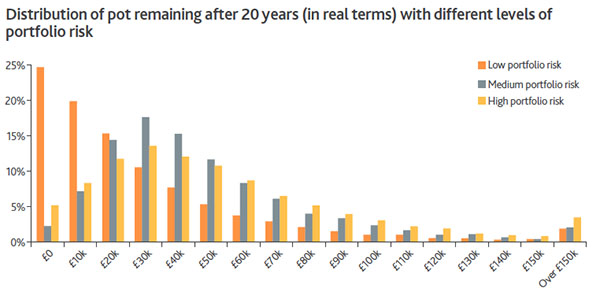From the blog: The flexibilities did away with traditional thinking on what makes an appropriate default fund, and with it kick-started the debate on the best route for members to access and draw an income from their defined contribution pots.
Since then, government-backed auto-enrolment provider Nest has been hard at it trying to get a handle on the answer.
It followed its earlier consultation with ‘A retirement blueprint for Nest’s members’ – it’s worth noting the specificity of its target audience here, as many schemes and providers across the DC industry have been eagerly anticipating what direction Nest would take before making their own moves.
Since then, government-backed auto-enrolment provider Nest has been hard at it trying to get a handle on the answer.
It has followed its earlier consultation with ‘A retirement blueprint for Nest’s members’.
It’s worth noting the specificity of its target audience in the title – perhaps a word of caution, as many schemes and providers across the DC industry have been eagerly anticipating what direction Nest would take before making their own moves.
What is it?
The blueprint is a ‘core strategy’ and theoretical framework for turning pension savings into an income stream – rather than a product reveal – for which Nest will be seeking feedback from other corners of the industry before taking forward.
Centring on drawdown as a default strategy, the blueprint is the culmination of extensive research of what members want, what they think they want, and what they need, so as not to miss the key target of avoiding members running out of money before death.

Source: Nest
The strategy breaks down retirement into three phases – ages mid-60s to mid-70s; mid-70s to mid-80s; 85-plus – and provides three building blocks to reflect the transitions between them:
An income drawdown fund
A cash lump sum fund
Later-life protected income
The key here is flexibility. With the exception of the third phase, members are free to access their cash and take ad hoc lump sums, or can opt out altogether.

Income drawdown
The drawdown phase has been designed to pay an income of 4 per cent for 20 years.

Source: Nest
Ten per cent of the starting pension pot will be kept in liquid money market instruments in case the member wants to make ad hoc withdrawals.

Crucially, it’s during the drawdown period that an allocation of between 1.5 and 2 per cent of the pot will be drip-fed into the third building block, the later-life protected income fund, a collective pool of assets.
In the second half of the drawdown period, allocations to buy a later-life income are locked down and cannot be redeemed.

If that bit sounds familiar, it might be because it’s reminiscent of former pensions minister Steve Webb’s and PPF chief Alan Rubenstein’s ‘pension income builder’, a strategy they outlined in December 2013 as part of Webb’s defined ambition vision.
The idea was to take part of a member's contributions and buy units of income for later life.
It involved investing collectively and aimed to give some level of certainty to members in retirement – in effect, in the Nest example, this idea has been applied as a sort of collective DC for decumulation, with risks shared between members.
Risk of ruin
Nest will explore further the possible techniques to avoid the key risks of the building blocks, namely sequencing risk – or ‘pound cost ravaging’, where a drawdown fund is depleted simultaneously by withdrawals and market dips – and inflation risk, which the mastertrust concluded should be managed rather than hedged.
However, volatility management overlays and multi-asset strategies come with active-like costs, so Nest will have to be mindful of value when assessing the merits of these.
The income drawdown funds aims to achieve a “high probability” of generating a sustainable income until around age 85.
As part of this, Nest is testing what probability levels would be “acceptable” for its members.

Note: Distribution of pot remaining after 20 years equates to cumulative excess money in scenarios where there is some left after 20 years of income drawdown. Model assumes £100,000 is initially invested in the income drawdown fund with an annual income of £4,000 increasing with inflation and taking account of allocations to later-life protected income fund.
Nest is paying close attention to the distribution of returns and says any surpluses could be held back for the member’s cash lump sum fund to use as they wish, as opposed to increasing income payout levels when times are good.
Later life
While Nest is considering US-style deferred annuities, it said the UK insurance industry might not be in a position to make this commercially viable.
Full medical underwriting may also be necessary to get the pricing right, plus insurers in the UK have a tough regulatory environment to contend with.
As such, Nest seems to be leaning towards the CDC-style method of paying out later-life income mentioned above.
Nest acknowledges the blueprint will not suit everyone but is rather a utilitarian approach to solving the decumulation puzzle.
No doubt it’ll be a springboard to move the debate on in the wider context on pension reform, and will likely help inform those schemes still in the midst of reshaping their default strategies.
For industry responses to the blueprint, click here
In the original version of this article, it was incorrectly stated here that drawdown was a 10-year phase rather than 20. The article has since been updated.














